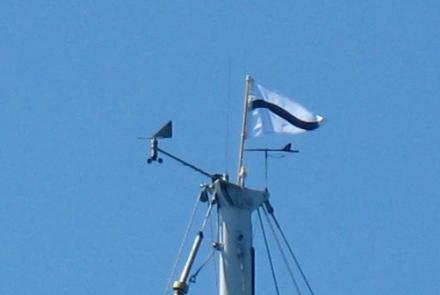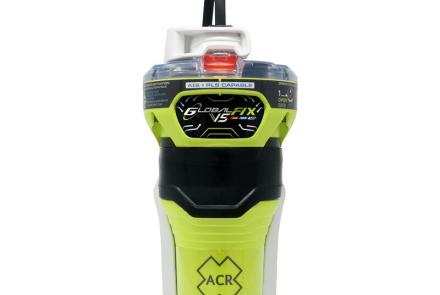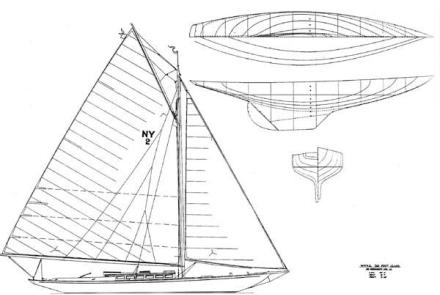Sacrificing One’s Body: Better, Safer Docking
Eventually, all good things must come to an end. After a brisk sail on the bay, or perhaps a passage of many days, we inevitably return to a safe harbor and a snug berth. And therein lies the problem: the same vessel that’s safely taken us across oceans tends to turn into an unmanageable tank when we negotiate the last 100 yards.
Various CCA members offered stories of docking gone bad: one very experienced sailor fell off a large cruising boat at the worst possible moment, and could have easily become a human fender. Another stepped off onto an unmoored set of dock steps which slid sideways and caused him to fall unceremoniously onto his ample keister. One skipper mentioned that, due to his dependence on prop walk to bring the stern towards the dock, he completely botched a docking when bringing the opposite side along a different dock.
How does one prevent these embarrassing, and potentially injurious misadventures? Practical Sailor offers entire volumes on “How to Dock Your Yacht” but we’ve only got a moment, so here’s a few suggestions on how to appear more handy, and less hilarious.
- Avoid getting between the vessel and the dock. Few of us actually jump into the water, but we can end up there by not hanging on as the boat decelerates, or as we step onto the dock steps, the dock itself, or a “Welcome Aboard” mat. Hang onto a shroud or other immovable piece of gear for the last few feet into the dock.
- Learn how to throw a line correctly. The trick is to split the coils of line between your throwing hand and your non-throwing hand. Throw a reasonable length of line, say 25’, with your “good” arm, and let the rest of the coils get pulled from your other hand. With practice, you can throw 35’ or more of line. However, this generally takes both hands, leaving zero hands for the “ship”.
- As the skipper, you need to understand prop walk. There are books on the subject, but suffice to say that propellers cause the sterns of vessels to slide sideways, depending on whether they are in forward or reverse. This can be dramatic on a single screw trawler, or insignificant on a Transpac 52. Understanding how it affects your boat, whether docking port side to, or starboard side to, is vital for consistent docking.
- Spring lines are often confused, especially in their roles for arriving to and departing from docks. There must be a mnemonic that captures this, but most of us commit to memory that spring lines on the ends of the boat are used in departures, while midships springs help in arrivals. Ideally, a midships spring line arrests the boat’s movement, especially when “slipped” or eased as it comes under tension, while keeping the boat parallel to the dock. This takes a modicum of skill, so expecting volunteers to arrest the forward motion of a 40,000 pound boat smoothly may be overly optimistic. Once made fast, a midships spring allows the skipper to place the boat in gear and to pivot the boat with the helm, as other dock lines are made fast.
- Try to secure the boat (or offer lines to those who are trying to secure it) when the boat has as little way on as possible. We’ve seen skippers who have left the helm while their boat is still headed into the slip at half a knot because they felt they were needed elsewhere. The skipper’s job should be to coach the crew with clear voice commands, to steer the boat into the right location, and then to stop it cold so there’s the least amount of energy that needs to be dissipated using highly tensioned nylon lines. Skippers: do your job at the helm until you have no other steering or propulsion contributions to make then, and only then, perhaps help with a stern line.
- Finally, your fenders are expensive cylinders containing air that protect an even more expensive hull that contains your life’s savings, or in some cases, your wife’s first husband’s life savings. Don’t be cheap; buy large diameter fenders and fleece fender covers and inflate them until they are just firm. Allow them to compress when you come alongside a dock or piling. You’re not trying to create springs, but rather energy absorbers that keep your hull a safe distance away from exposed nail heads and roughly cast concrete.
I know we already said “finally” but finally, stop shouting. Go over your instructions in a calm, quiet voice prior to getting to the dock. During your pre-docking pep talk, start with the fact that no one should put themselves in harm’s way. The boat, and it’s Awlgrip topsides, are not worth it. At least tell them you believe that, even if you’re not entirely sure. And have a lovely and safe day on the water.






